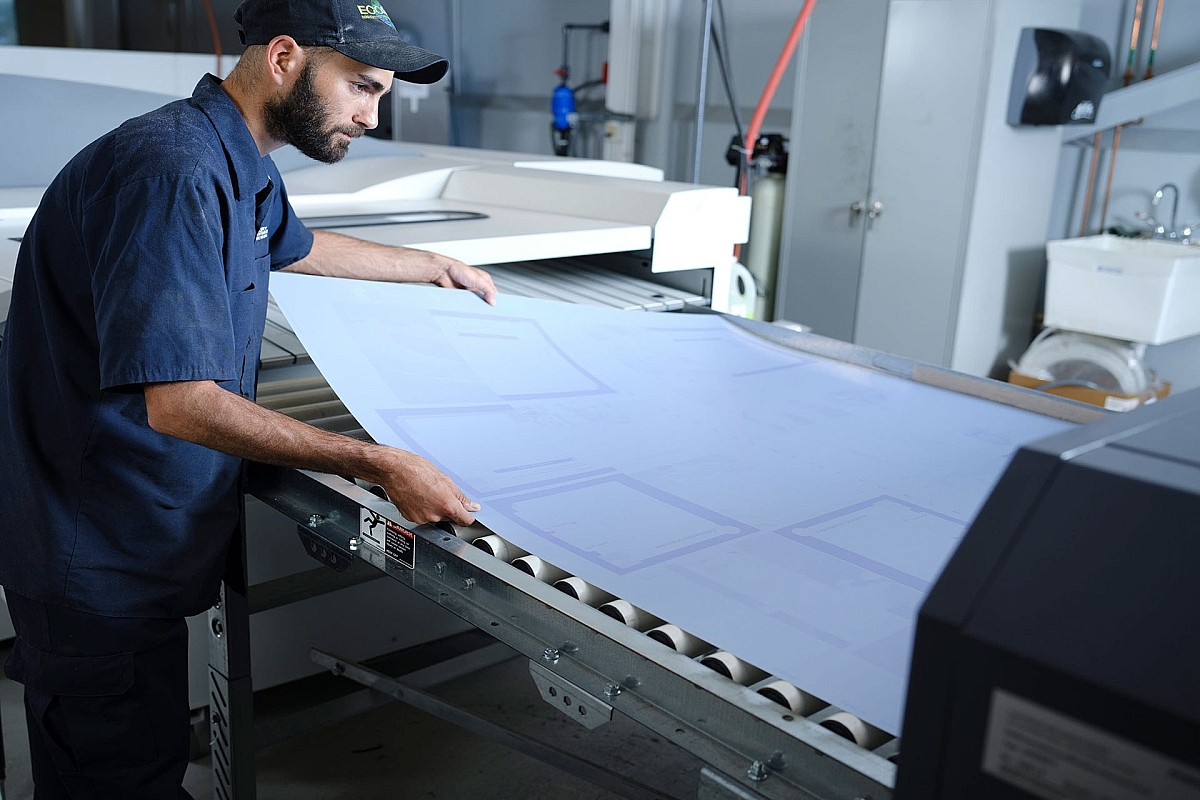Process-Free vs. Chem-Free

KODAK SONORA Process Free Plates streamline operations, saving time and reducing complexity
A Comparative Look at Modern Printing Plates
In the challenging world of commercial printing, efficiency and sustainability are more important than ever. One of the most significant advancements in this field is the development of true process-free printing plates. But what sets these plates apart from low-chem and chem-free alternatives? Let’s dive into the advantages of process-free plates in a way that’s easy to understand.
1. Simplified Workflow
True process-free plates eliminate the need for chemical processing entirely. This means you can skip the processing step altogether, reducing the number of steps in your workflow. In contrast, low-chem and chem-free plates still require some level of chemical processing, albeit less than traditional plates. By removing this step, true process-free plates streamline operations, saving time and reducing complexity.
2. Environmental Benefits
One of the standout features of true process-free plates is their environmental friendliness. Since they don’t require any chemicals for processing, there’s no need to handle, store, or dispose of hazardous materials. This not only reduces your environmental footprint but also simplifies compliance with environmental regulations. Low-chem and chem-free plates, while better than traditional plates, still involve some chemical usage and disposal.
3. Cost Savings
By eliminating the need for processing chemicals and the associated equipment, true process-free plates can lead to significant cost savings. For example, a mid-size commercial printer using a traditional process plate could save around $195,000 USD over five years since there’s no need to invest in process equipment, maintain it, or purchase and dispose of chemicals. For low-chem and chem-free plates the savings would be around $130,000.

True process-free plates ensure consistent dot sizes and sharper prints
4. Improved Consistency and Quality
True process-free plates offer consistent performance because they eliminate variables associated with chemical processing, such as fluctuations in chemical concentration and temperature. This leads to more reliable and predictable print quality. Low-chem and chem-free plates, while improved over traditional methods, can still be affected by these variables. Moreover, chem-free plates require clean-out units which introduce mechanical variations like roller pressure or roller wear into the platemaking process. These variations can affect the plate quality and require more maintenance and downtime for the processing equipment.
5. On-Press Advantages
True process-free plates provide on-press advantages, such as more consistent dot sizes. This consistency is achieved by eliminating the variations that can arise from chemical development. As a result, you get sharper and more precise prints, enhancing the overall quality of your printed materials.
The Bottom Line
True process-free printing plates like KODAK SONORA Plates* offer a range of advantages over low-chem and chem-free alternatives. They simplify workflows, provide significant environmental benefits, reduce costs, improve consistency and quality, and offer on-press advantages. As the printing industry continues to evolve, embracing these innovations can help businesses stay ahead of the curve while promoting sustainability and efficiency.
*SONORA XTRA-3 Plates are not available in Germany.